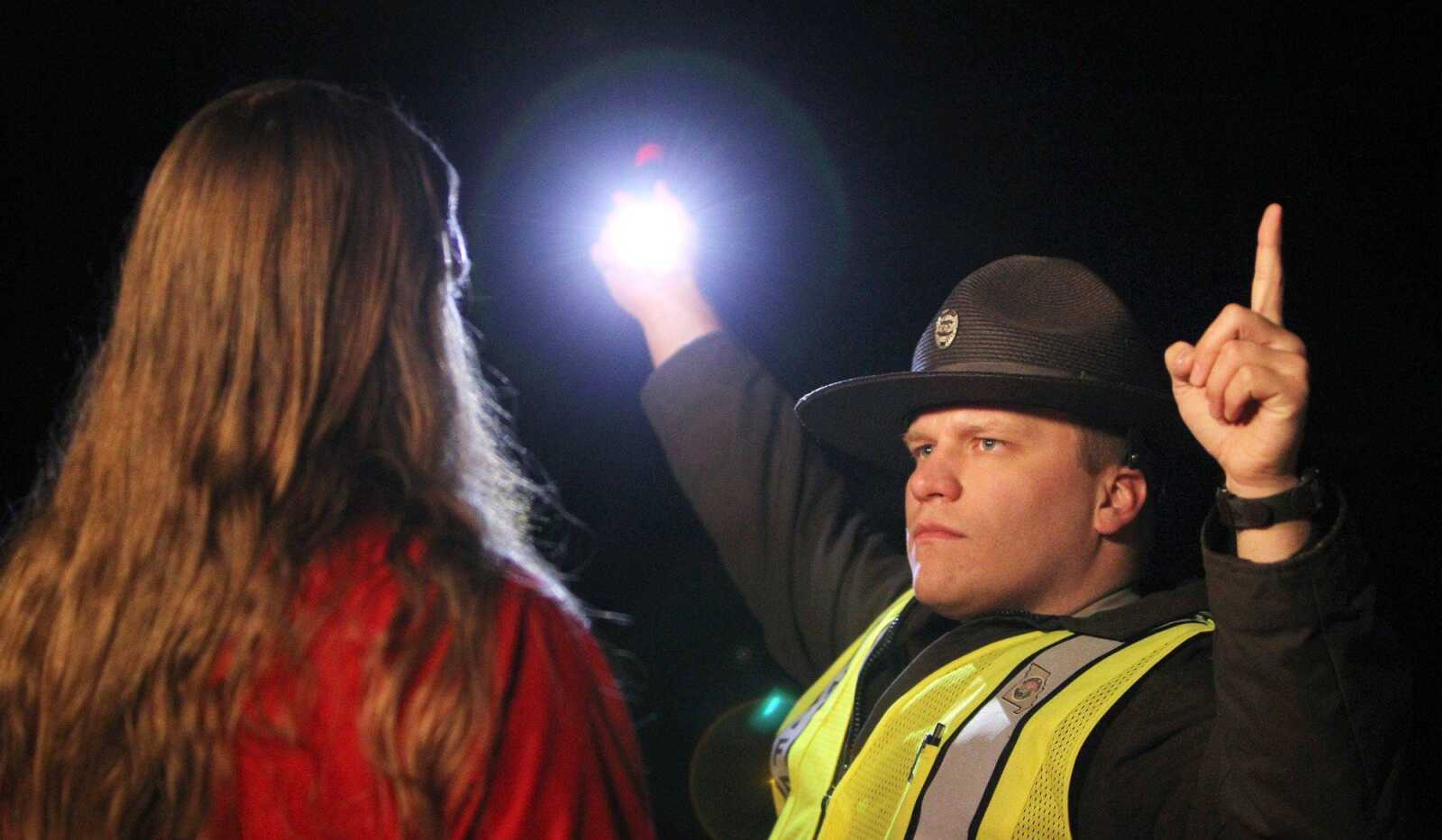HILLSBORO, Mo. -- Social media have made the sheriff's office here rethink how it catches drunken drivers, and that means a different way of doing sobriety checkpoints.
Deputies used to do big checkpoints that lasted for hours in the same spot. But after word traveled through Facebook and Twitter about their locations, traffic and arrests dropped significantly.
Now, they focus on smaller operations on less-traveled roads at times when people don't expect to get caught, including weeknights. And they will pack up and move during the course of an evening; once they arrive at a new spot, it takes just four minutes to set up.
They conducted two such checkpoints recently, starting about 9:15 p.m. on a Wednesday night just outside Arnold, Mo.
"People are surprised to see us out here on a weeknight," said Lt. Dave Marshak, who heads the special operations division of the sheriff's office. "Everyone expects us to be out on a Friday or a Saturday."
Eight deputies formed a line and checked each car headed west on Vogel Road, asking drivers if they'd had anything to drink and looking for signs they could be drunk, such as glassy eyes or the smell of alcohol. During the process, many of those drivers' passengers held smartphones, their thumbs moving quickly over the screens.
About 10 p.m., Cpl. Tim Whitney, helping screen those drivers, received a text from his wife showing a friend's Facebook posting which said simply, "Check point at Miller and Vogel." Another Facebook user commented, "omg tonight ?!?!"
The news made its way to Twitter, too.
"There's a sobriety checkpoint at Vogel and Miller. Why . Its 10 pm on a wednesday night." tweeted a person using the handle of @jacked--righty.
By then, the line of cars had dwindled to just a few. That's when Marshak decided it was time to move.
"Social media cuts both ways. It can be a good tool to inform the public about what's going on, and it also can be used to undermine enforcement efforts," said Barbara Harsha, executive director of the Governors Highway Safety Association.
Still, she said, the purpose of a checkpoint isn't just to catch drunken drivers -- it's also to deter them.
Weeknight checkpoints, which many police departments do, are a good way to remind drivers it doesn't happen just on weekends, and to make them think twice about drinking and driving anytime, Marshak said.
Last year, 217 people were killed in the state in crashes involving a driver under the influence of drugs or alcohol, according to the Missouri Department of Transportation. Jefferson County had 19. Sheriff's deputies there arrested 838 DUI suspects in 2012.
St. Louis police said the location of its checkpoints have been posted on social media, but there hasn't been a significant decrease in traffic after the posts.
St. Louis County police continue to focus on large checkpoints on busy roads, and have not seen a consistent decline in traffic throughout the evening.
"For that reason, we haven't seen a need to change drastically what we're doing just because of social media," said Officer Karl Streckfuss, education coordinator for the agency's highway safety unit.
The same was true for St. Charles County and the Illinois State Police.
It was not clear why Jefferson County's experience was different, although it might have to do with lighter traffic there.
On that Wednesday, Jefferson County deputies set up their second checkpoint in the Imperial area at the entrance to the Seckman Lakes Estates subdivision.
Deputies had stopped about 70 cars there a few months earlier, also on a Wednesday night, and arrested seven people for drunken driving, Marshak said.
It was much slower this time around. Several drivers were suspected of driving drunk but passed field sobriety tests, and the only arrests were for driving with revoked licenses.
Despite a mere trickle of traffic, the second checkpoint did not escape notice on social media.
"Why's it that every time I've heard about a sobriety check near Seckman this year, it's been on a Wednesday?" tweeted @Doylethegreat. "Y'all gettin' foggy on Wednesday?"
------
Information from: St. Louis Post-Dispatch, http://www.stltoday.com
Connect with the Southeast Missourian Newsroom:
For corrections to this story or other insights for the editor, click here. To submit a letter to the editor, click here. To learn about the Southeast Missourian’s AI Policy, click here.







